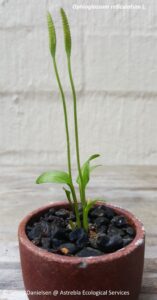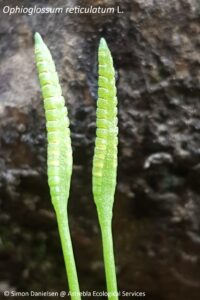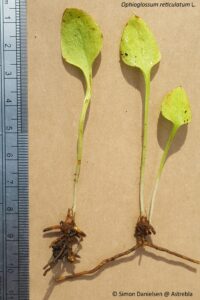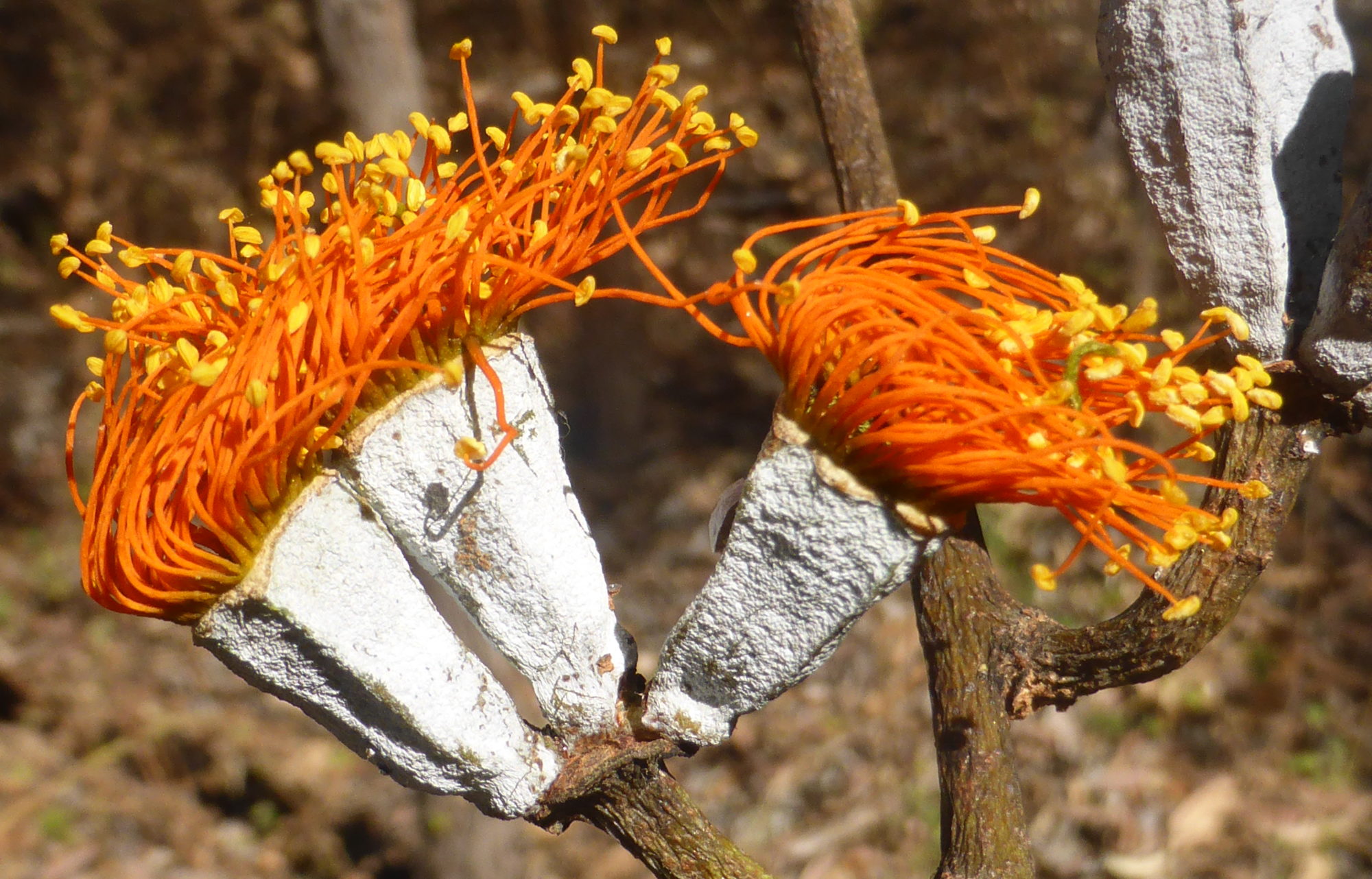The world of plants is truly amazing – I recently became aware for the first time of a genus that has been literally under my feet for years – the tongue ferns or Ophioglossum spp.!
 I first became aware of these tiny ferns when they began popping up in my hanging plant pots! Soon I had a whole colony, and they transplanted well into tiny bonsai pots, although I had no idea what they were – there were only tiny, fairly non-descript leaves with blades about 10-15 mm long.
I first became aware of these tiny ferns when they began popping up in my hanging plant pots! Soon I had a whole colony, and they transplanted well into tiny bonsai pots, although I had no idea what they were – there were only tiny, fairly non-descript leaves with blades about 10-15 mm long.
Finally, fruiting spikes emerged and they revealed their identity as ferns!
 Those pictured here are Ophioglossum reticulatum L. (Ophioglossaceae), a tiny fern growing to 20 cm or so tall, and recorded from damp, shady situations among grass or on bare soil, often in eucalypt forest.
Those pictured here are Ophioglossum reticulatum L. (Ophioglossaceae), a tiny fern growing to 20 cm or so tall, and recorded from damp, shady situations among grass or on bare soil, often in eucalypt forest.
This species has been collected from Melbourne to the northern tip of Cape York Peninsula and west to Broome – it also occurs in New Zealand and in tropical and sub-tropical countries throughout the world.
It was first described by the father of taxonomy Carl Linnaeus in 1762 in his Species Plantarum.
 The fruiting spikes (actually modified leaves) are shown in this image – they are approximately 5 cm tall, and their presence mark the members of Ophioglossaceae as quite different from other ferns – they are referred to by taxonomists as either fern allies or fern ‘oddities’.
The fruiting spikes (actually modified leaves) are shown in this image – they are approximately 5 cm tall, and their presence mark the members of Ophioglossaceae as quite different from other ferns – they are referred to by taxonomists as either fern allies or fern ‘oddities’.
This is because most ferns have the seed-bearing organs, or sporangia, arranged on the underside of the leaves/fronds. In the Ophioglossaceae, the sporangia are placed at the apex of a specialised leaf or fruiting spike.
Another distinctive feature of ferns not shared by Ophioglossum spp. is that their leaves do not unfurl – they merely lengthen from the rhizome.
 I also recorded this species on a survey I conducted in 2018 on the Evelyn Tablelands, growing on basaltic soil in Eucalyptus tereticornis open forest.
I also recorded this species on a survey I conducted in 2018 on the Evelyn Tablelands, growing on basaltic soil in Eucalyptus tereticornis open forest.
Superficially, they looked very similar (but smaller) to the Typhonium praetermissum I had been surveying in the Darwin region a few months earlier.
 These tiny leaves were barely noticeable among the leaf litter, but were spotted by my eagle-eyed mate Dave Hunter, whose curiosity and ability to pick out tiny orchids and other cyrptophytes is fast becoming legendary!
These tiny leaves were barely noticeable among the leaf litter, but were spotted by my eagle-eyed mate Dave Hunter, whose curiosity and ability to pick out tiny orchids and other cyrptophytes is fast becoming legendary!
